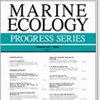Increased temperatures impact the reproduction of localized estuarine kelp populations more than salinity or invasive species
IF 2.1
3区 环境科学与生态学
Q2 ECOLOGY
引用次数: 0
Abstract
ABSTRACT: Estuarine habitats regularly experience large variations in abiotic conditions such as temperature and salinity; however, under climate change and the increasing threat of invasive species, the pressure from both abiotic and biotic stresses has been increasing. Several studies have investigated the interactions of the adult stages of macroalgae; however, there is little understanding of how microscopic stages of Macrocystis pyrifera and Sargassum muticum interact or how climate change may influence this interaction. Our research considers the effects of climate-driven changes in temperature and salinity and their interactions with S. muticum on the growth and survival of M. pyrifera gametophytes from Tomales Bay, CA, USA. Using kelp culturing experiments, we tested (1) how different salinities and temperatures impact early life stages M. pyrifera from different sources within Tomales Bay, (2) how the presence of invasive S. muticum propagules affect M. pyrifera gametophyte development, and (3) how the combined effects of salinity, temperature, and S. muticum presence affect M. pyrifera early life stages. Our results suggest that M. pyrifera may be able to adapt to local conditions like salinity; however, higher temperatures from a changing climate and the presence of competitors from biological invasions act additively, but not interactively, to negatively impact the early life stages of kelp. By determining how foundation species respond to various abiotic and biotic stressors, we can better predict how these species will perform in a changing environment and how they will contribute to overall ecosystem resilience.温度升高对局部河口海带种群繁殖的影响大于盐度或入侵物种的影响
摘要:河口生境经常会经历非生物条件(如温度和盐度)的巨大变化;然而,在气候变化和入侵物种威胁不断增加的情况下,来自非生物和生物压力的压力也在不断增加。有几项研究调查了大型藻类成体阶段的相互作用;然而,人们对巨尾藻和马尾藻的微观阶段如何相互作用以及气候变化可能如何影响这种相互作用知之甚少。我们的研究考虑了气候驱动的温度和盐度变化及其与 S. muticum 的相互作用对美国加利福尼亚州托马雷斯湾马尾藻配子体的生长和存活的影响。通过海带培养实验,我们测试了(1)不同的盐度和温度如何影响托马莱斯湾不同来源的海带,(2)入侵的S. muticum繁殖体如何影响海带配子体的发育,以及(3)盐度、温度和S. muticum的综合影响如何影响海带的早期生命阶段。我们的研究结果表明,海带可能能够适应当地的盐度等条件;但是,气候变化导致的温度升高以及生物入侵带来的竞争者的存在,会对海带的早期生命阶段产生负面影响,而不是相互影响。通过确定基础物种如何应对各种非生物和生物压力因素,我们可以更好地预测这些物种在不断变化的环境中的表现,以及它们将如何促进整个生态系统的恢复能力。
本文章由计算机程序翻译,如有差异,请以英文原文为准。
求助全文
约1分钟内获得全文
求助全文
来源期刊

Marine Ecology Progress Series
环境科学-海洋学
CiteScore
5.30
自引率
8.00%
发文量
238
审稿时长
3 months
期刊介绍:
The leading journal in its field, MEPS covers all aspects of marine ecology, fundamental and applied. Topics covered include microbiology, botany, zoology, ecosystem research, biological oceanography, ecological aspects of fisheries and aquaculture, pollution, environmental protection, conservation, and resource management.
 求助内容:
求助内容: 应助结果提醒方式:
应助结果提醒方式:


